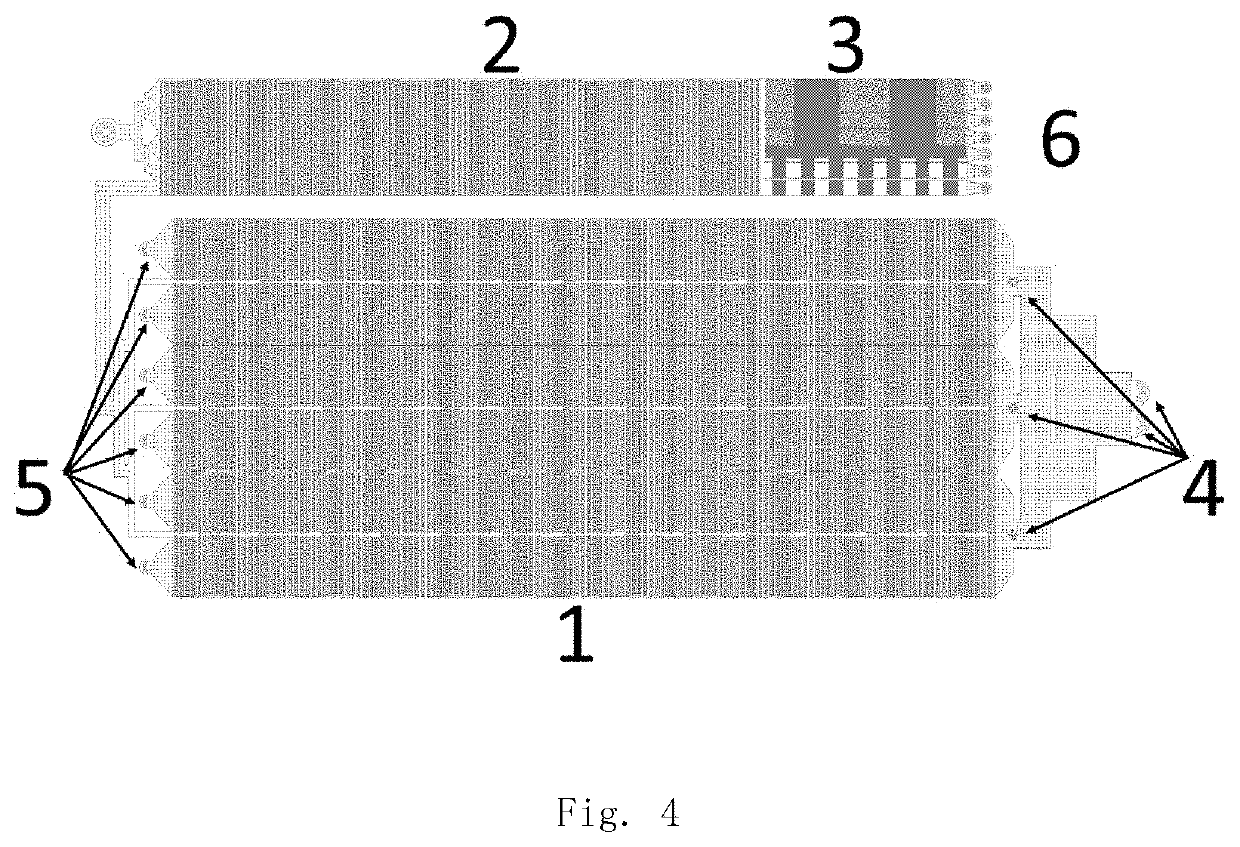Chip for separating and capturing cell and application of chip in tumor cell sorting thereof
a cell and chip technology, applied in the field of biological research, can solve the problems of low specificity, easy missed diagnosis, and easy false positive and false negative, and achieve the effect of reducing detection costs
- Summary
- Abstract
- Description
- Claims
- Application Information
AI Technical Summary
Benefits of technology
Problems solved by technology
Method used
Image
Examples
embodiment 1
[0095]As shown in FIG. 1, an integrated chip for separating cells with one step includes a cell separation region 2; one end of the cell separation region 2 is provided with a cell solution inlet and a buffer solution inlet, and the other end of the cell separation region 2 is provided with an outlet; a to-be-separated cell solution passing through the cell sap inlet, and a buffer solution passing through the buffer solution inlet jointly flow into the cell separation region 2; and the cell separation region 2 is capable of separating the inflowed cell as per a size.
[0096]The cell separation region is composed of a DLD triangular micropost array structure. From an inlet side to an outlet side, the cell separation region has a gradually increased critical sorting diameter or an unchanged critical sorting diameter. The gradually increased critical sorting diameter has a gradient from 8 μm on the inlet side (the gradient is provided every 4 μm) to 20 μm on the outlet side (a gradually ...
embodiment 2
[0099]As shown in FIG. 2, an integrated chip for separating and capturing cells with one step includes a cell separation region 2 and a cell capture region 3; one end of the cell separation region 2 is provided with a cell solution inlet and a buffer solution inlet, and the other end of the cell separation region 2 is provided with an outlet; one end of the cell capture region 3 is provided with an inlet connecting with the outlet of the cell separation region 2, and the other end of the cell capture region 3 is provided with a separated liquid outlet 6; a to-be-separated cell solution passing through the cell sap inlet, and a buffer solution passing through the buffer solution inlet jointly flow into the cell separation region 2; the cell separation region 2 is capable of separating the inflowed cell as per a size; the cell separated as per the size enters the cell capture region 3; and the cell capture region 3 can capture a target cell.
[0100]The cell separation region is composed...
embodiment 3
[0104]As shown in FIG. 3, an integrated chip for separating cells with one step includes a cell enrichment region 1 and a cell separation region 2; one end of the cell enrichment region 1 is provided with one or more inlets 4 to serve as a cell solution inlet and a buffer solution inlet, and the other end of the cell enrichment region 1 is provided with a waste liquid outlet 5 and an enriched liquid outlet; one end of the cell separation region 2 is provided with the buffer solution inlet and the enriched liquid inlet connecting with the enriched liquid outlet of the cell enrichment region 1, and the other end of the cell separation region 2 is provided with an outlet; a to-be-separated cell sap is perfused from the inlet of the cell enrichment region 1 to enter the cell enrichment region 1; the cell enrichment region 1 is capable of improving a concentration of target cells in the cell solution, so as to facilitate subsequent further separation; an enriched liquid flowing out from ...
PUM
 Login to View More
Login to View More Abstract
Description
Claims
Application Information
 Login to View More
Login to View More - R&D
- Intellectual Property
- Life Sciences
- Materials
- Tech Scout
- Unparalleled Data Quality
- Higher Quality Content
- 60% Fewer Hallucinations
Browse by: Latest US Patents, China's latest patents, Technical Efficacy Thesaurus, Application Domain, Technology Topic, Popular Technical Reports.
© 2025 PatSnap. All rights reserved.Legal|Privacy policy|Modern Slavery Act Transparency Statement|Sitemap|About US| Contact US: help@patsnap.com



